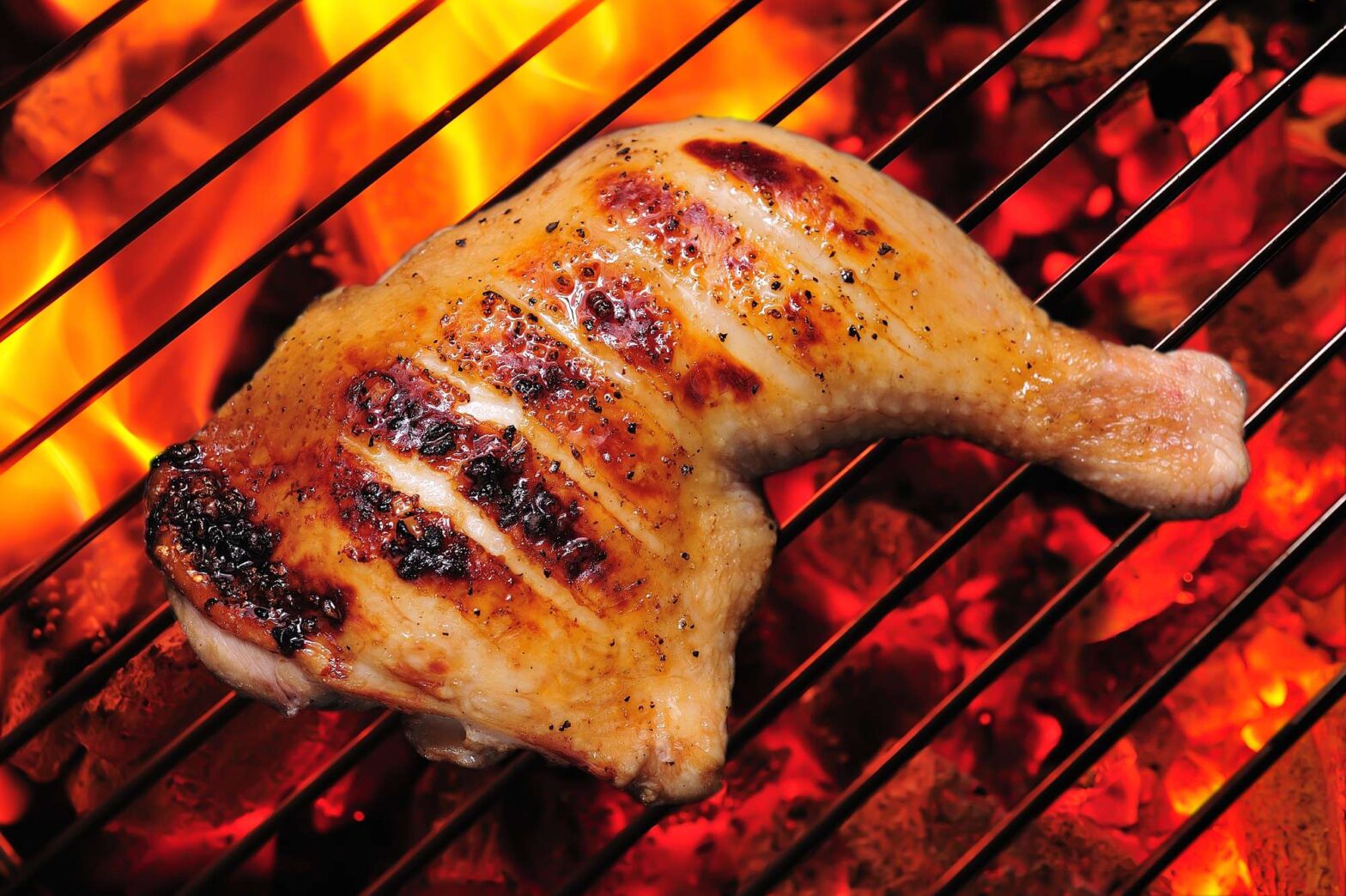One of the great frustrations at a cookout is when you want to grill up some delicious chicken for yourself, the missus, and the kids, and—despite your best intent—the chicken comes out all ruined by burning on the grill.
Trust me when I tell you that we’ve all been there. And while you could always order a pie or two from that pizzeria you like so much as Plan B, having to do so defies the purpose of firing up the grill and gathering the family round a good, home-cooked meal to begin with.
The good news is that, as long as you arm yourself with the right technique, your chicken will never burn on the grill again. So let’s introduce you to it and help you solve your problem once and for all.
If your chicken always burns on the grill, it’s probably because you’re grilling it over direct heat. Next time, try grilling it over indirect heat and see if that solves your problem.
I know what you’re thinking, now. “Direct heat, indirect heat… Sammy, what’s all of this?! I just wanted to learn some simple grilling techniques, and here you are, going all pitmaster on me.”
Buckle up and sit tight, fellers, cause good ol’ Sammy here’s gonna take you all on a trip to BBQ knowledge town! I promise you it will be worth your while by the time you’re done with my ramblings.
Direct Heat vs. Indirect Heat
As a griller, you have two types of heat at your disposal whenever you fire up the grill: direct heat and indirect heat. This sounds highfalutin and all, but all grills have these, and they are easier to master than you probably think.
When you cook your chicken directly above the flame from the gas burner—or the radiant heat of the glowing coals—you’re doing so with direct heat. This, as you can probably guess, is how most folks grill all of their food.
Direct heat cooks meats, including chicken, quickly, no doubt about it. Alas, it dries it out and burns it just as fast.
When you cook your chicken near, but not directly over, the heat source, you’re cooking it with indirect heat. This type of heat takes a bit of technique to obtain on a grill, charcoal or gas. But, once you learn the ropes, the rewards are many.
Indirect heat is strong enough to cook meat, poultry, and seafood through to the desired doneness, and yet gentle enough to not burn it.
Since there’s no coals or burners to flare up when fats and juices drip down from the meat, the chicken getting kissed by flames is no longer a problem (and a piece of chicken kissed by a flame too many is a piece of chicken badly burnt).
How to Set Up Your Grill for Direct and Indirect Heat
Setting up a gas grill for direct and indirect heat is easy as one, two, three: ignite the grill, set half the burners to medium-high, and leave half the other burners unlit. Close the lid and let the appliance preheat for 20 to 30 minutes.
With this technique you get a gas grill with two cooking zones: The zone above the lit burners gives you high, direct heat for searing the chicken; the one above the unlit burners gives you moderate, indirect heat for cooking it though.
To set up a charcoal grill for direct and indirect heat, light the coals in your chimney starter and wait for them to ashen over. Once they’re white and ashy, throw them into the pit.
Rake all of the coals over to one side, keeping the other coal-free. (Many place an aluminum pan over the coal-free zone to collect the juices that drip down from the meat.)
Do this, and you have yourself a charcoal grill with a two-zone fire: For direct heat, you lay the chicken fillets on the side of the grate where the coals are. For indirect heat, you move them over to the side that’s coal-free.
Grilling Chicken to Perfection Every Single Time
The trick to perfectly cooked chicken, you see, lies in figuring out how to use direct heat and indirect heat.
Start off the chicken, whether we’re talking breasts or thighs, over direct heat. By doing so, you will give it a quick initial sear. The intense, direct heat of the glowing coals or gas flame gives it that crispy, golden-brown crust we all crave.
As soon as there’s good browning on the chicken, move it over to indirect heat. The gentle, indirect heat cooks the interior to the minimum internal temperature for safe consumption prescribed by the USDA (that’s 165°F for all poultry) without burning it up on the outside.
The result is grilled chicken that smells inviting and makes the mouth water. The crispy crust has all the flavors that come with browning the meat, while the inside remains moist and tender.
Grab a piece of pen and paper, write this technique down, and try it out the next time you make chicken. I guarantee you, you will not regret it.


